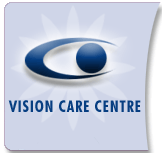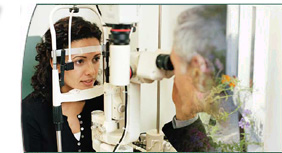


|
Lasik
provides an
alternative for people with the following vision disorders: nearsightedness,
farsightedness, and astigmatism.
The ProcedureAfter
careful evaluation and measurement, the surgeon uses a microkeratome
to raise a thin layer of the cornea's surface, exposing the inner-cornea.
A small central area of corneal tissue is then ablated with the
excimer laser... the amount depending on the degree of correction
necessary to restore natural vision.
Once
completed, the exposed inner-cornea is sealed by replacing the
previously prepared flap. The cornea has extraordinary natural
bonding qualities that allow effective healing without the use
of stitches.
In
the top photo, a measurement of the cornea is taken to mark the
area where the flap will be made. In the bottom illustration,
you can see where the laser ablates the inner-cornea.
Custom
Wavefront, high definition vision with Zyoptix™ from Bausch
& Lomb is the new standard in LASIK and laser vision correction.
Custom Wavefront provides the most precise level of measurement
and correction available today.
Zyoptix™ is so advanced it lets us treat eye imperfections
that could not previously be corrected with conventional LASIK
techniques. This new system gives you the ultimate in clarity
by using wavefront technology that analyzes each eye individually
for precise results and outstanding visual quality. With the Bausch
& Lomb Zyoptix™ system, you’ll have the confidence
of knowing it’s been used in over 100,000 procedures worldwide.
Zyoptix
uses wavefront technology, which allows us to measure and correct
each individual’s unique visual defects. Astrophysicists
developed this technology when they needed better technology to
repair the Hubble telescope. When it was first put into service,
the high-powered telescope’s images had distortions, similar
to those many humans have. The images visible with the telescope
were blurred because the telescope’s mirrors had aberrations
(imperfections), similar to those in human eyes.
To
repair the Hubble telescope they needed a new way to analyze the
visual information. The scientist developed wavefront technology,
a method to examine the visual information one pixel at a time.
It was a breakthrough. Now we are using that technology to analyze
human vision. Wavefront lasering is about the one pixel at a time
analysis and treatment of your unique visual system.
With
wavefront technology we analyze microscopy small portions of your
visual system (your cornea and lens), similar to the one pixel
at a time analyses the astrophysicist did with the Hubble telescope.
Each small area is measured to exacting standards and a unique
treatment plan is created for you.
This wavefront technology is now available for Lasik, laser vision correction in the Bausch & Lomb Technolas Laser, Zyoptix™ System. The
FDA studied The Bausch & Lomb, Zyoptix™ wavefront system
for years before it was approved in the US. Of the patient involved
in the FDA trials, not a single patient was dissatisfied with
the results. Worldwide over 100,000 Zyoptix™ procedures
have been performed. That’s more that 10 times that of the
closest competing laser vision correction system.
So
how do you find out if you have the potential for the extra sharpness
of high definition vision? Call today and make an appointment
for your consultation. Vision Care Center .
Overview
Nearsightedness or myopia, occurs when light entering the eye focuses in front of the retina instead of directly on it. This is caused by a cornea that is steeper, or an eye that is longer, than a normal eye. Nearsighted people typically see well up close, but have difficulty seeing far away.
Signs
and Symptoms
Detection and Diagnosis
Treatment
The treatment for nearsightedness depends on several factors such as the patient’s age, activities, and occupation. Vision can corrected with glasses, contacts, or surgery. Refractive procedures such as LASIK can be considered for adults when the prescription has remained stable for at least one year. |
Copyright 2005-2014 - Vision Care Centre (India) Design by PLANETC
